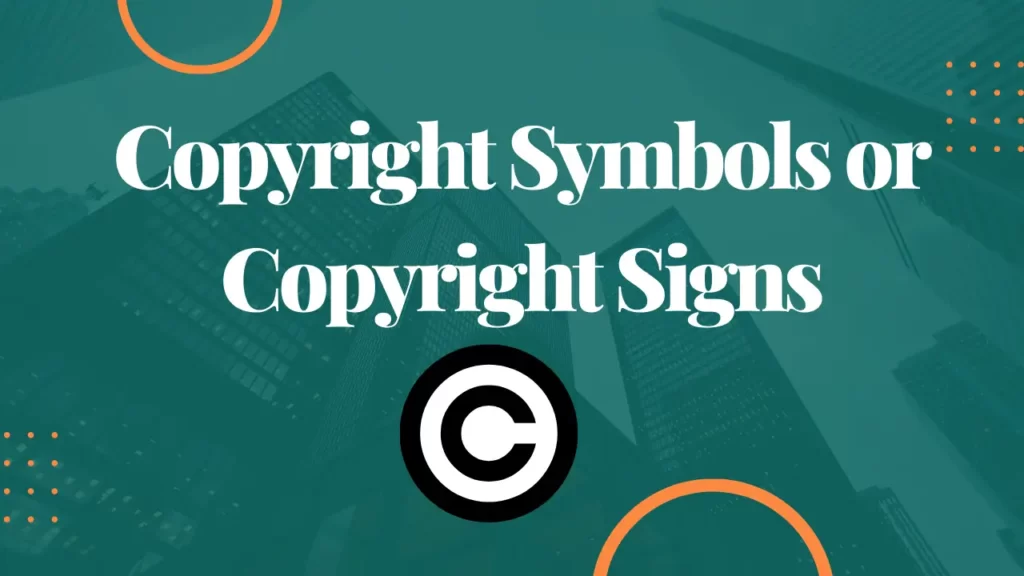Copyright Symbols | Copyright Signs | Copyright Symbols in Pakistan
Copyright Symbols or Copyright Signs
Copyright Symbols or| Copyright Signs: Some symbols usually being used in Pakistan as copyright symbols or copyright signs. There are three symbols or signs of copyright: (1) the letter C in a circle Ⓒ or ⓒ;(2) the word “Copyright;” and (3) the year of first publication.
The copyright symbol is not required to be used necessarily, in Pakistan, but it’s a good idea.
It consists of ©, the letter C in a circle; the word “Copyright”; and the date of first publication, in Pakistan. Although it’s not mandatory to include all three elements, including them at least implies that you have some sort of copyright protection in your work or creation. If you’re submitting content online, such as to an online journal or blog, this can be especially helpful because it makes clear to readers who might want to reproduce or adapt your work that their use would be an infringement on your rights as an author (or creator).
The proper format for using this symbol is © 2022 Taxocrate (Pvt) Ltd:

Copyright Symbols are Generally Considered Best Practices
Though not strictly required, it is generally considered best practice.
Copyright symbol and year
The copyright symbol (©) should be included in the notice for works published on or after March 1, 1989. The © may also be accompanied by the word “copyright,” which is a synonym for this symbol and never includes a period following “c.”
While the use of any copyright notice was once required as a condition of Popyright Protection
While the use of any copyright notice was once required as a condition of copyright protection. While you do not need to use notice, doing so can benefit you. For example, you can use the C symbol with your own initials or name to claim ownership of the original work and prevent others from claiming it as their own. A public copyright statement can also help distinguish your work from similar works by others and add weight to any legal action brought against those who make unauthorized uses of your copyrighted material.
The most common form for crediting authorship on artistic works is “©” followed by the year of first publication or production; e.g., ©2016 Mohsin Shah indicates that Mohsin Shah is the author/creator of whatever has been published/produced during 2016.
You can use the copyright symbol, the word "Copyright" (or "Copr. "), and the year of publication
If you do not mark your work with the copyright symbol, the word “Copyright,” and the year of first publication, anyone can claim ownership over your content. If someone infringes on your rights, you will have difficulty defending them. If someone does infringe on your work without permission, they could potentially be sued and held accountable for their actions.
On the other hand: if you choose to put a copyright on your work but don’t put in an appropriate amount of effort into making sure it is actually yours—for example by failing to properly mark it as copyrighted or publish it within a certain time frame—then that may mean that no one cares about stealing from you in the first place!
The only thing you can own is what you create yourself; ideas themselves cannot be copied because they belong to everyone (or at least everyone who thinks the same way).
Artwork owners should place an asterisk or other mark next to their names on any artwork they wish to protect with copyright
Your artwork goes into the public domain when you do not mark it with a copyright symbol, as explained in Section 4 of this post. It is important to use a pencil and a small asterisk or another mark next to your name on any work of art that you wish to protect with copyright. The marks will only be visible to people who trust each other, since they are visible only if the paper is held at an angle to the light. In this way, if one person gives another one of their works without marking it as copyrighted or giving them permission first, they can know that this was done deliberately by designating who should see those markings and who should not see them. This will help ensure honest artists earn fair compensation for their works while making sure that no one profits from someone else’s work without permission or payment.
Artwork that has been published without a visible copyright notice becomes public domain.
The public domain is the space where anyone can use work. The copyright symbol acts as a signal to others that you do not intend for your work to be in the public domain. If someone removes your copyright symbol and uses your work without permission, you can still sue them for copyright infringement.
The public domain is a good thing because it allows people to learn from and build on previous works, which makes our culture richer. It also allows people who cannot afford legal fees access to works that they otherwise might not be able to enjoy because they are too expensive or difficult to find (such as rare old books). However, suppose you were an artist who created artwork with no intention of selling it but instead intended only for other artists’ benefit (for example, children’s book illustrators). In that case, this may not apply so well–and even if it did apply perfectly fine due to some sort of “public interest” exception clause written into law by some kind soul at some point during history…well…it doesn’t matter anyway because now we’re talking about what happens when someone knowingly violates another person’s copyright legally granted rights under current laws regarding intellectual property laws worldwide.”
Use a copyright symbol, “Copyright” and date to protect your copyrights.
When you are using a copyright symbol, “Copyright” and date to protect your copyrights:
- Be sure to include the owner’s name (for example, Mohsin Ali Shah).
- Include the year in which your work was first published (or created if it has not been published). For example, if you wrote a poem in 1985, you would write “1985.” This lets other people know that there is no more time for them to use your work without paying for it. If you did not publish your poem until 1986 or 1987, simply write “1986” or “1987.”
Contact Us
Popular Service
Provincial Tax Authorities
Misc. Services
Recent Article
-
Company Registration | Company Registration in Karachi, Islamabad/Rawalpindi & Lahore, Pakistan
-
Income Tax and Sales Tax Return Filing Services| Our Expert Corporate Lawyers In Karachi
-
Corporate Lawyers’ Need at Business Hub, Karachi
-
Additional Sales Tax Imposed
-
Comprehensive Guide to NTN (National Tax Number) Registration in Pakistan
-
Income Tax Return Filing in Karachi By Top Tax Lawyers of Pakistan
-
Trademark Registration in Karachi Safeguarding Your Business Identity
-
Taxation Trust Tax Lawyers Consultants
-
Mahr The Dower Money a Symbol of Commitment and Financial Responsibility
-
Calculating Income Tax As Per Income Tax Ordinance 2001
Disclaimer: All information is provided on this portal solely for informational purposes. This portal is not affiliated with the Government website. Please note that this disclaimer also applies to our website, and we may refer to it as ‘us’, ‘we’, ‘our’ or ‘website’. The information on the website has been gathered from various government and non-government sources. We disclaim any liability for errors, injuries, losses, or damages arising from the use of this information. We also disclaim any liability for the availability and authenticity of this information. Our services consist of filling out forms, providing legal advice, and assisting our clients. The departmental processing of the registration forms is not our responsibility. You will have to use a service fee for professionally preparing your application, submitting it to the relevant authorities, and coordinating your application process. You will have to pay any Government fees.
